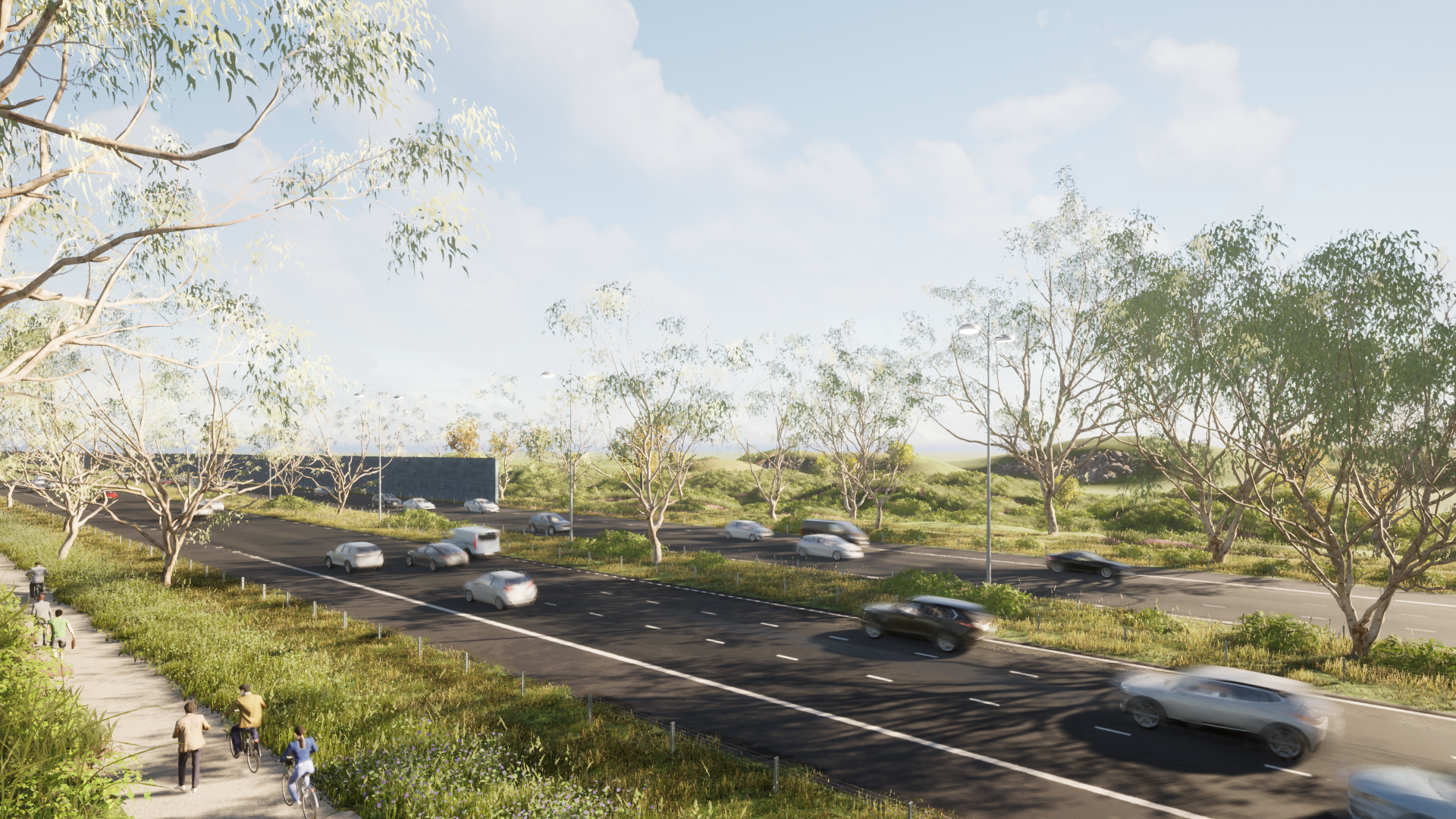
Moving Melton
Transport Prospectus 2025
Why is Transport so Important?
A poor transport network is a barrier for job seekers and the existing workforce to finding and maintaining employment, and makes it difficult to access education, services and necessities.
It can create social and economic disadvantage for whole communities:
Motorists in the City of Melton have access to fewer arterial roads and fewer route choices.
The radial nature of the train network means the distance between rail lines, and train stations, grows with distance from Melbourne.
Bus routes cover less of the population and are indirect and infrequent.
Poor transport options has led to high car dependency with 85% of weekday trips and 93% of weekend trips being made by car.
This creates high costs for individuals in maintaining private transport, congested roads and significant social isolation and economic disadvantage for those without private vehicles.
Without action this will worsen, with significant population growth over the next 30 years in the City of Melton is not matched by job growth, which is occurring closer to Melbourne's centre.
Today there are only 0.38 jobs per member of the labour force, this compares to the growth area average of 0.6. 73 per cent of our local workforce leave the municipality to access employment.
A business-as-usual approach will see this trend increase with a projected jobs shortfall of 100,000 jobs by 2051 which will see daily commutes grow from 45,000 in 2021 to 110,000 by 2051.
What difference can it make?
Creating jobs in the City of Melton is critical for long term prosperity, productivity and liveability. Our residents have limited access to local employment, with 73 percent of the workforce travelling outside of the municipality for employment daily.
With significant land availability and a booming workforce, the future outlook for the City of Melton is one that will drive regional and state economic activity for decades to come.
The City of Melton’s Investment Attraction Strategy (2020-2050) establishes a robust evidence base to support investment and infrastructure to transform the outer west into a state significant employment hub with an invigorated thriving economy.
The delivery of 100,000 new local jobs by 2050 will provide the City of Melton with employment self-sufficiency equivalent to the growth area average and return $19B to the economy annually.
Existing and future employment precincts will deliver 73,000 of these jobs alone, driving employment growth for Melbourne’s outer west through major catalyst projects such as the New Melton Hospital. Many of these projects are reliant on supporting infrastructure to realise their full potential and maximise commercial investment attraction.
Fast-tracking infrastructure projects including electrification of the Melton rail line, upgrading the Western and Melton Highways from rural to urban standard, and duplicating and upgrading Hopkins, Christies Roads and the Palmers Road corridor, will facilitate jobs growth and commercial investment across Melbourne’s outer west, and beyond.

